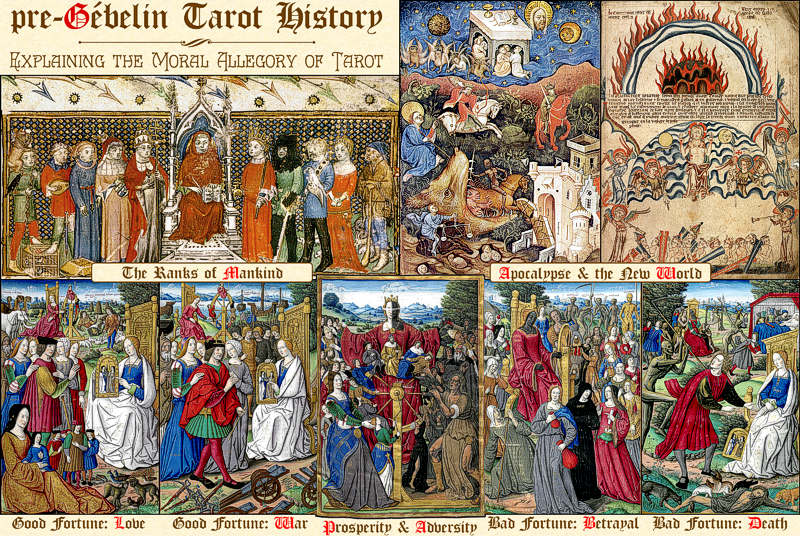This print by Lucas van Leyden is circa 1509. It shows two relatively well-off beggars accepting charity from a vagabond apparently more needy than they. According to The Prints of Lucas van Leyden and His Contemporaries (1983, Ellen S. Jacobowitz and Stephanie Loeb Stepanek), the two false beggars may be allegories of Sloth.
The seated man with the outstretched hand appears to be a cobbler (identified by the awl pinned to his hat). Other than the Prodigal Son, the cobbler was one of the most frequently cited examples of those tempted by and willingly accepting a dissolute life. Often he does not work; in later pictures, he wastes time playing the bagpipes. As such, he exemplifies laziness or sloth. The woman with her hand in her blouse can also be interpreted as exemplifying sloth. Susan Kozlow discusses this emblematic use of the hand-in-blouse motif concealed in a realistic guise. Among the literary sources she cites for the origin of this idea, the following proverb seems to be the most relevant to Lucas’ print: “A slothful man hideth his hand in his bosom, and will not so much as bring it to his mouth again.” It is possible that the woman represents more than sloth. There is a suggestion of erotic intent in her gestures: one hand in her blouse, the other offering an open vessel between her legs. She seems to be willing to trade favors for whatever the man offering the bowl is giving away. Lucas’ image is a condemnation of a particular segment of society. When used in this way, to comment on real life practices and attitudes, the visual arts parallel literature, particularly texts like Brant’s Ship of Fools or Erasmus’ In Praise of Folly. This mode of expression, for which Lucas is noted, might be called the moralizing genre.

|


The authors add that the public was wary and distrustful of vagrants, and were often warned about their dangers. The comments regarding cobblers are suggestive, given the depiction of Tarot’s Bagatto in some later decks by Dellarocca. In discussing Explaining the Tarot, Sherryl made this comment:
I've been puzzled by the Soprafino deck's image of the Bagatto as a cobbler hoisting a wine glass with a pitcher of wine on his work table. I recall reading somewhere that Bagatto means "cobbler" in the Milanese dialect, but why the wine glass and pitcher? My personal, somewhat whimsical interpretation was that this depicts the lowest of the working class - an artisan who drinks on the job, doing shoddy work and missing his deadlines.
The source of the Milanese usage she mentions was Gertrude Moakley, and it is cited on page #3 of Tom Tadfor Little’s series, Moakley 101.
Below are two more collections of low-lifes, including beggars, cripples, and street performers. They are attributed to either Hieronymus Bosch or Brueghel the Elder. A couple entertainers dressed as fools are highlighted.









No comments:
Post a Comment